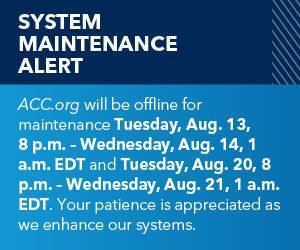Tenecteplase Reperfusion Therapy in Acute Ischemic Cerebrovascular Events–III - TRACE-III
Contribution To Literature:
The TRACE-III trial showed that, among patients with acute ischemic stroke presenting between 4.5–24 hours of symptom onset due to proximal large arterial occlusion and evidence of salvageable brain tissue on CT perfusion imaging but no access to endovascular thrombectomy, the use of tenecteplase was superior to medical management in improving neurological disability at 90 days.
Description:
The goal of the trial was to demonstrate the efficacy and safety of tenecteplase administered 4.5–24 hours after stroke onset in patients who had had ischemic stroke resulting from large-vessel occlusion, had salvageable tissue, and did not have access to endovascular thrombectomy.
Study Design
Patients with acute ischemic stroke presenting between 4.5–24 hours of symptom onset were randomized to receive tenecteplase (n = 264) or control/standard management (n = 252). The tenecteplase group received tenecteplase intravenously as a bolus administered over a period of 5–10 seconds at a dose of 0.25 mg/kg (maximum dose, 25 mg) immediately after randomization. The control group received antiplatelet therapy (standard medical treatment) at the discretion of the investigators.
- Total number screened: 1,469
- Total number of enrollees: 516
- Duration of follow-up: 90 days
- Mean patient age: 67 years
- Percentage female: 32%
Inclusion criteria:
- Age ≥18 years
- Acute ischemic stroke including stroke on awakening and unwitnessed stroke
- Onset between 4.5–24 hours
- Pre-stroke score of 0 or 1 on the modified Rankin scale (mRS)
- A score of 6–25 on the National Institutes of Health Stroke Scale (NIHSS)
- Evidence of occlusion of the intracranial internal carotid artery or the first (M1) or second (M2) segment of the middle cerebral artery on computed tomographic (CT) angiography or magnetic resonance angiography
- Evidence of salvageable brain tissue as identified on perfusion imaging (ischemic core volume of <70 mL, a ratio of the volume of hypoperfused tissue to the ischemic core volume of ≥1.8, and a difference in volume between the hypoperfused tissue and the ischemic core of ≥15 mL)
Exclusion criteria:
- Endovascular thrombectomy was planned at the time of randomization
- There were guideline-based contraindications to thrombolytic agents
Other salient features/characteristics:
- NIHSS score (median): 10
- Onset (last known well) to randomization: 12.3 hours
- Known onset time: 57%, stroke on awakening: 35%
Principal Findings:
The primary outcome, mRS score of 0 or 1 at 90 days for tenecteplase vs. control, was: 33% vs. 24.2% (relative rate [RR] 1.37, 95% confidence interval [CI] 1.04-1.81, p = 0.03).
Secondary outcomes:
- mRS score of ≤2 at 90 days: 43.6% vs. 33.3% (RR 1.31, 95% CI 1.05-1.63)
- Major neurological recovery at 72 hours: 16% vs. 6% (RR 2.66, 95% CI 1.51-4.69)
- Reperfusion at 24 hours: 20.1% vs. 11.8% (p < 0.05)
- Mortality at 90 days: 13.3% vs. 13.1%
- Symptomatic intracranial hemorrhage: 3.0% vs. 0.8% (RR 3.82, 95% CI 0.82-17.87)
Interpretation:
Among Chinese patients with acute ischemic stroke presenting between 4.5–24 hours of symptom onset due to proximal large arterial occlusion and evidence of salvageable brain tissue on CT perfusion imaging but no access to endovascular thrombectomy, the use of tenecteplase was superior to medical management in improving neurological disability at 90 days. All-cause mortality was similar; rates of symptomatic intracranial hemorrhage within 36 hours were higher with tenecteplase.
The presence of salvageable brain tissue, as determined by CT perfusion imaging in this trial, has become an important risk stratification method for patients presenting with ischemic stroke. Although adjunctive endovascular treatment has become front-line therapy for eligible patients presenting with an acute ischemic stroke, many patients do not have access to endovascular therapy or are outside the eligibility window. This is particularly relevant among patients in the developing world. Future studies on this topic among other populations as well as understanding risk-benefit for bleeding are needed.
References:
Xiong Y, Campbell BC, Schwamm LH, et al., on behalf of the TRACE-III Investigators. Tenecteplase for Ischemic Stroke at 4.5 to 24 Hours Without Thrombectomy. N Engl J Med 2024;391:203-12.
Editorial: Lee VH. Small Step or Giant Leap? Expanding the Acute Stroke Thrombolysis Window to 24 Hours. N Engl J Med 2024;391:273-5.
Clinical Topics: Cardiovascular Care Team, Dyslipidemia, Vascular Medicine, Lipid Metabolism, Novel Agents
Keywords: Ischemic Stroke, Tenecteplase
< Back to Listings

